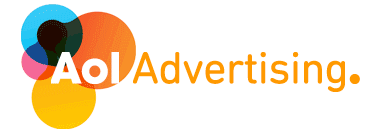I’ve Seen The Future And AOL Is Still In It.

AOL is currently in the process of not only restructuring the entire company, but also, making an attempt to change advertising on the web. Currently, Google is the dominant force for advertising on the web, they are to put it quite simply, the de facto standard. However, the web is a very dynamic market, especially when it comes to advertising. Advertising will go where the traffic is going and where they can get the best return on their investment.
Google’s original approach of text/image ads has been very successful for the company. But they know it’s time for a change too. Their “Watch This Space” campaign which is currently ongoing is proof of that. Google knows it has to act quickly and bring in the next generation of online advertising. So, who if anyone can stand in Google’s way? I think the answer to that question is, AOL.
AOL? Yes. Hear me out. AOL’s new CEO Tim Armstrong, formerly, SVP of Advertising/Sales and Operations at Google is looking to turn this company around through content creation and advertising. This man knows advertising. He knows what the industry giant (Google) has done over the past 5-10 years and he knows where this industry is heading. Take a look at AOL’s latest advertising plan, Project Devil. Project Devil’s objective is to change advertising on the web.
AOL is looking to implement single advertisements per page that are larger and more interactive than any ads before them. The future is going to revolve around self-contained advertisements. It’s time to start thinking of advertisements as websites within a website. Ads will have a lot more functionality than ever before. When you click an ad you will not be directed away from the source page, but instead, you will be presented with more information in an interactive dialog. Imagine a car ad where you could view the interior/exterior and price out a model straight from an advertisement.
There may eventually become a point where it will be difficult to differentiate between an advertisement and actual content, which take that as you will, can either be considered a good thing by some and a bad thing by others. Either way, we will save that discussion for another time. The key to AOL’s success here with Project Devil will be whether or not they allow third-party publishers to use their system. Similar to the way Google AdSense works.
The reason allowing third-party publishers to use Project Devil will be crucial is because of reach. The more publishers using AOL’s system, the more reach they have and the more money they can make. In addition to that, if a publisher chooses to use AOL’s project devil, they will need to forgo using Google AdSense since both platforms are very similar. If enough publishers switch away and are happy with AOL’s results, it could be very bad for Google.
AOL is already slowly rolling out Project Devil to a couple of their web properties, I have yet to hear any news from Google about the release of their updated ad platform. I do know, however, that Google’s new platform will be similar to AOL’s in terms of the richness and interactivity of the ads.
I wouldn’t count AOL out yet, there is still time to succeed when 2011 rolls around.